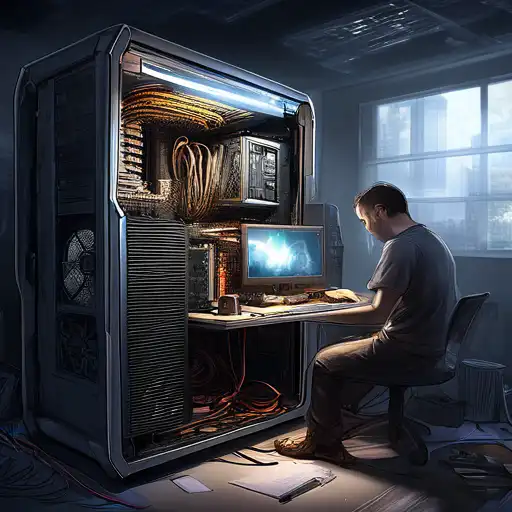Introduction to PC Building
Building your own PC can be a rewarding experience, offering not only a sense of accomplishment but also the opportunity to customize your machine to your exact needs. Whether you're a gamer, a content creator, or just someone looking for a powerful workstation, assembling your own computer allows you to select each component based on your specific requirements.
Why Build Your Own PC?
There are several advantages to building your own PC, including cost savings, the ability to upgrade components easily, and the satisfaction of creating something unique. Plus, you'll gain a deeper understanding of how computers work, which can be invaluable for troubleshooting and future upgrades.
Essential Components for Building a PC
Before you start, it's important to understand the key components you'll need:
- Processor (CPU): The brain of your computer, responsible for executing instructions.
- Motherboard: The main circuit board that connects all components.
- Memory (RAM): Temporary storage for data that the CPU needs quick access to.
- Storage (SSD/HDD): Where your operating system, programs, and files are stored.
- Graphics Card (GPU): Essential for rendering images, especially important for gaming and video editing.
- Power Supply Unit (PSU): Provides power to all components.
- Case: Houses all the components and protects them from dust and damage.
Step-by-Step Guide to Building Your PC
Now that you're familiar with the components, let's walk through the assembly process:
- Prepare Your Workspace: Ensure you have a clean, static-free area to work in.
- Install the CPU: Carefully place the CPU into the motherboard's socket.
- Install RAM: Insert the RAM sticks into the appropriate slots on the motherboard.
- Mount the Motherboard: Secure the motherboard inside the case.
- Install Storage: Connect your SSD or HDD to the motherboard and power supply.
- Install the GPU: If you're using a dedicated graphics card, insert it into the PCIe slot.
- Connect the PSU: Attach the power supply to the motherboard, GPU, and storage devices.
- Cable Management: Organize cables to ensure good airflow and a clean look.
- Power On: Connect your monitor, keyboard, and mouse, then power on your PC to install the operating system.
Tips for First-Time Builders
Building a PC for the first time can be daunting, but here are some tips to help you succeed:
- Watch Tutorials: There are countless videos online that can guide you through the process.
- Check Compatibility: Ensure all your components are compatible with each other before purchasing.
- Take Your Time: Rushing can lead to mistakes. Take breaks if needed.
- Ask for Help: Don't hesitate to reach out to forums or friends who have experience.
Conclusion
Building your own PC is an exciting project that can save you money and give you a machine tailored to your needs. By following this guide and doing your research, you'll be well on your way to becoming a confident PC builder. Remember, the PC building community is vast and supportive, so don't be afraid to seek advice and share your experiences.
